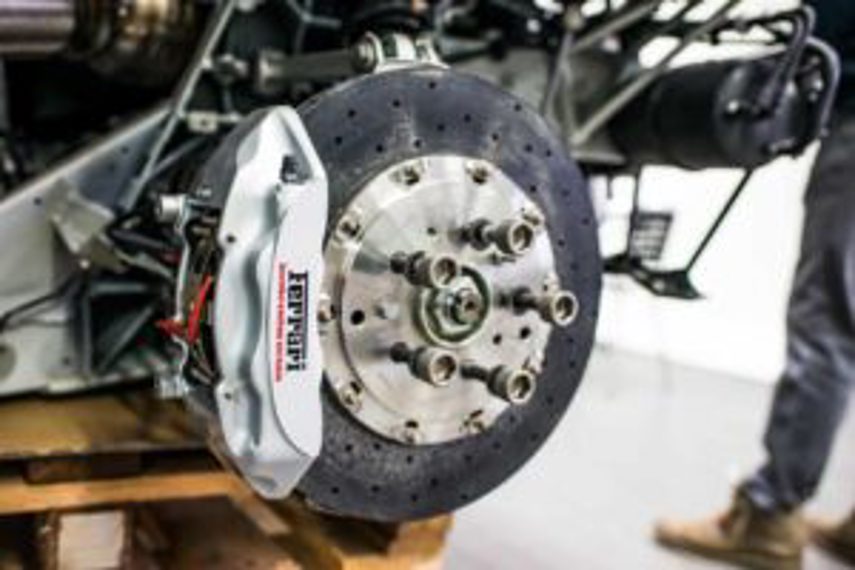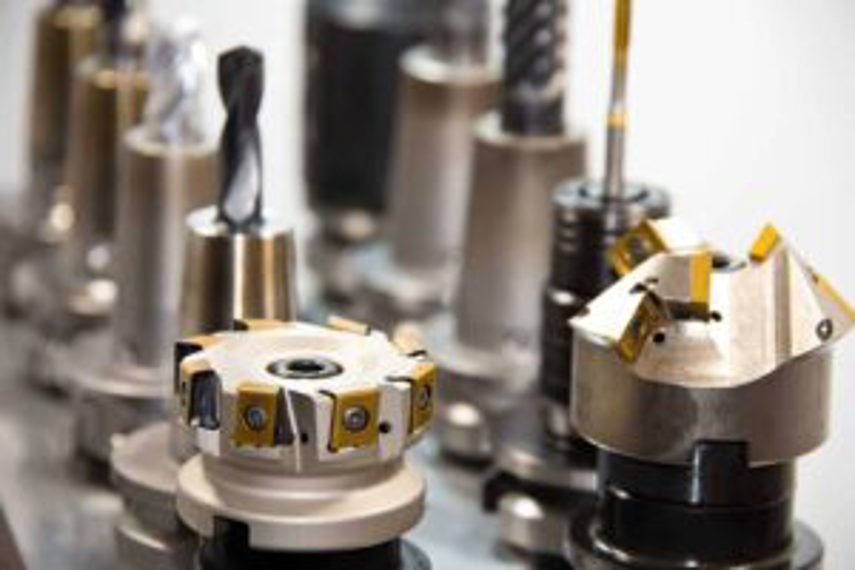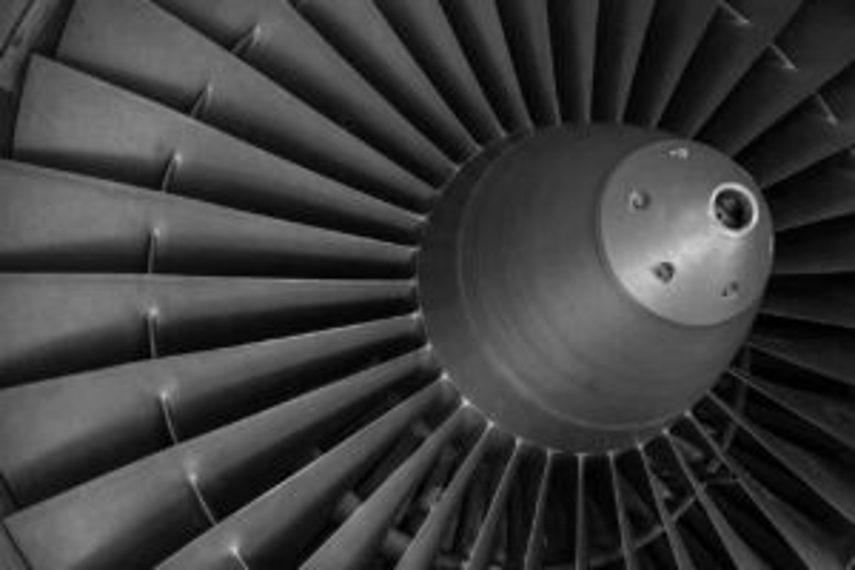
The additive manufacturing market is growing – and it’s predicted to continue growing in the next few years.
Here we examine metal additive manufacturing, and answer all of your questions about what it is, how it works, what different techniques are used, and how SMEs can use this increasingly accessible technology.
What is metal additive manufacturing?
Metal additive manufacturing or metal 3D printing is a type of additive manufacturing that uses a heat source – such as a laser or electron beam – to heat metal in powder or wire form so that it consolidates to form an object.
This manufacturing process offers unsurpassed design freedom and the ability to manufacture parts from a variety of metal-based materials, and has a number of benefits.
Metal additive manufacturing is an important part of manufacturing industry growth. It helps manufacturers improve efficiencies, reduce waste, lower emissions, and increase the speed to market of stronger and lighter parts.
How does additive manufacturing work?
Additive manufacturing technology relies on a digital data file being transmitted to a machine that then produces a three-dimensional object.
The machine builds the object layer by layer. First the raw material in powder form is spread in a thin layer where the part is to be built, and this is then treated so that it forms a solid shape. Subsequent layers are then produced the same way until the whole object is completed.
Understanding metal additive manufacturing processes
There are three primary methods leading the metal additive manufacturing trend:
- Powder bed methods spread a thin layer of powder over the powder bed surface. Once this layer is spread, high-powered thermal energy – a laser or electron beam – is used to selectively meld and sometimes melt the powder together. We’ll focus on this type of additive manufacturing method below.
- Directed energy deposition is where the raw material is deposited using a nozzle at the same time as it is melted with a heat source. This process is performed over several layers to produce a solid object.
- Metal binder jetting is the most common method used for high-volume applications. Liquid binder is imprinted onto thin layers of powder and an object is created layer by layer by essentially gluing the particles together. The object is then treated – either sintered or infiltrated – to harden it.
These methods take a transformative approach to assembly and industrial fabrication. By using computer-aided-design software to guide digital hardware, metal additive manufacturing can accurately produce detailed geometric shapes. Through the meticulous deposit of layer upon layer of metal powders, lighter, stronger parts can be produced, offering manufacturing operations more flexibility and greater efficiency.
 The aerospace industry was one of the first to use new additive manufacturing methods to produce lighter parts with fewer internal defects
The aerospace industry was one of the first to use new additive manufacturing methods to produce lighter parts with fewer internal defects
Here we home in on four types of powder bed fusion technology used to 3D print metal objects:
- Selective Laser Sintering (SLS)
- Direct Metal Laser Sintering (DMLS)
- Selective Laser Melting (SLM)
- Electron Beam Melting (EBM)
Is 3D metal additive manufacturing new?
Additive manufacturing is certainly not new – the technology has been around and has progressively gained traction since the 1980s.
Metal additive manufacturing quickly followed the use of polymer additive manufacturing, and the first 3D printed metal component was made from metal alloy powders in 1990 using an SLS process.
The history of metal additive manufacturing
High-end technology industries businesses, such aerospace and motorsport manufacturers, were the early adopters of metal additive manufacturing.
The first metal 3D printing was achieved using an SLS method, but there were initially problems with molten metals forming melt balls - a phenomenon also known as balling. This problem meant that the surface created was irregular, affecting the object's density overall. To eliminate this problem, melting point powder was devised by creating a blend of powders with both high and low melting points.
Since this time new methods of metal 3D printing have been developed, including DMLS, SLM and EBM – which we'll look at below. And with more cost-effective materials and machinery coming onto the market, metal additive manufacturing is becoming increasingly more mainstream.
 Nasa has been using metal 3D printing for many years to produce parts for its aircraft
Nasa has been using metal 3D printing for many years to produce parts for its aircraft
What are the different types of additive manufacturing?
There are several different methods for 3D printing metal objects. The main differences between these different methods are the raw materials each uses, what source is used to heat the raw material powder, and the characteristics of the solid form that is created.
What is selective laser sintering (SLS)?
SLS was one of the first additive manufacturing techniques, developed in the 1980s by Carl Deckard and Joe Beaman. This method uses powders spread in a thin layer that are heated using a laser to just around their melting point so that they fuse together – they do not melt completely.
The unfused powder around the solid form acts as a support structure, meaning that shapes with overhangs do not need support structures as they are created; instead, the object rests against the surrounding unfused powder as it prints.
While SLS has been used in the past to print objects from a variety of materials, today objects created using SLS are usually made from plastics like nylon or polyamide - which means the sintering temperature used is relatively low (around 205° Celsius). Nylon objects produced using this method are strong and durable, as well as UV and heat resistant.
At the same time, a major problem associated with objects created using SLS is that they can be porous – which is not a problem for polymers, which always retain some porosity, but is for metal.
What is direct metal laser sintering (DMLS) in metal additive manufacturing?
As the name suggests, DMLS is used to produce solid metal forms. The process DMLS uses is similar to that for SLS, but DMLS is specifically designed to work with almost any metal or alloy – like aluminium and titanium – which makes it a popular method for 3D printing. The objects produced through DMLS can be prototypes or products for end consumption.
A DMLS machine rolls out a thin layer of metal powder, and a laser is then used to heat this to just above melting point. This process continues layer after layer until the whole object is created.
This is an advanced 2D printing method that allows you to create intricate and accurate metal forms – from jewellery to engineering parts. Unlike SLS polymer printing, DMLS usually requires support structures when creating objects with overhangs.
This method is an efficient way to achieve rapid prototyping and the mass production of metal parts. Another key advantage is that the objects it creates don’t have the internal defects of those made using more traditional methods – which is especially important in industries like aerospace engineering. DMLS printers are costly – a commercial DMLS printer can set you back around $500K.
 The DMLS technique allows for the creation of precise parts from a variety of metals and alloys
The DMLS technique allows for the creation of precise parts from a variety of metals and alloys
What is selective laser melting (SLM)?
SLM is another system that uses powders and lasers to create solid forms layer by layer – but instead of sintering (i.e. fusing) the material together, it melts it completely. This produces an extremely strong object.
This method is limited to use with certain metals – such as stainless steel, aluminium, titanium and cobalt chrome – since not all metals have the right properties for use with this technique.
SLM is an energy-intensive process, since the raw material is completely melted, rather than sintered. One key advantage of this method is that very strong parts can be produced in a single form, rather than being made up of components that then require assembly. At the same time, objects created using this method can suffer from minor structural problems such as porosity and cracking, depending on the processes used.
These days most powder bed fusion machines used for metal 3D printing are SLM machines. Nasa, for instance, has been using SLM machines to produce aerospace parts for several years.
How does electron beam melting (EBM) work?
EBM is a 3D printing process that is similar to SLM, but uses an electron beam rather than a laser to heat the metal powder. This produces very strong forms, but these are less precise than those produced using SLM and DMLS, and this process works with a limited range of metals.
The only company currently producing electron beam 3D printing systems is Arcam, and this technology is currently mainly used in the aerospace and healthcare industries.
 SLM is a popular technique used for creating solid metal objects with metals like titanium and aluminium
SLM is a popular technique used for creating solid metal objects with metals like titanium and aluminium
Metals used in additive manufacturing
High-quality metal powder is important for successful powder bed fusion in metal additive manufacturing. Various metals such as titanium, steel, stainless steel, aluminium, copper, and nickel-based powders are used, depending on the method being employed.
Alternative wire feedstocks are also gaining market traction. The trend, which is derived from the welding industry, is seen as an attractive prospect. Material costs are relatively low and wire feedstock alternatives are wide-ranging – steel and stainless-steel alloys are available, as well as pure metals such as titanium, tungsten, and aluminium.
What are the benefits of using metal additive manufacturing?
There are multiple benefits of modern metal additive manufacturing, including:
- Metal parts can be built without traditional tooling
- Complex shapes can be created with internal voids that are difficult to machine, opening up new possibilities for design
- It is complementary to traditional methods and easily integrated into existing production practices
- It is quicker than traditional methods for producing unique objects like replacement parts and customised goods
- It reduces the time needed to produce prototypes
- It reduces material use and therefore total manufacturing cost
- It reduces the need for assembly
Is metal additive manufacturing affordable?
There are also downsides to using metal additive manufacturing – most notably the high cost of acquiring and setting up metal 3D printing machinery. To date the cost of metal printers has largely restricted the use of metal additive manufacturing to high-value industries like aerospace, defence, and medicine.
On top of the initial cost of purchasing machines, training, maintenance and consumables are needed – and most objects produced this way will also need post processing.
However, the cost of additive manufacturing is trending downwards over time, and is becoming increasingly accessible for smaller businesses - so it's worth looking into whether using this technology will suit your business.
 Metal 3D printing can be used to replace machine parts like turbine blades quickly - meaning less downtime for the businesses that use them
Metal 3D printing can be used to replace machine parts like turbine blades quickly - meaning less downtime for the businesses that use them
Who uses metal additive manufacturing?
The aerospace industry was one of the first to adopt additive manufacturing to produce optimised components such as guide vanes, engine turbine blades and fuel systems to improve functionality and reduce weight. These lighter parts contribute to lighter aircraft, which helps reduce fuel consumption.
The number of industries and individuals using metal additive technologies today represents a growing trend – artists, designers, jewellers, and manufacturers of medical and engineering goods use additive manufacturing to create a wide range of objects.
The relevance of metal additive manufacturing to SME manufacturers
SMEs tend to be left behind when it comes to new technology. Budget restrictions or risk aversion means many SMEs don’t invest in technological innovations like metal additive manufacturing. In addition they are often put off by its perceived complexity.
Additive manufacturing can be especially useful for prototyping in the product development stage – and can also be used to refine and improve existing products. As we’ve mentioned, using additive processes rather than traditional ones speeds up this process – meaning it takes less time for your products to hit the shelves.
Other benefits include the ability to minimise waste – which is key for those who deal with expensive materials, like jewellers – and that customisation is possible without the need to re-tool.
Whether you use additive manufacturing will depend on whether it’s the best available technology to achieve your goals, and how viable it is in terms of cost – you may want to look into the possibility of outsourcing additive manufacturing rather than investing the technology yourself.
Another question to ask is what your competitors are doing and where any capital investment will provide the greatest competitive advantage.
 Jewellers can use additive manufacturing techniques for intricate designs in precious metals - and reduce the waste of expensive materials in the process
Jewellers can use additive manufacturing techniques for intricate designs in precious metals - and reduce the waste of expensive materials in the process
Precious metal additive manufacturing
Precious metal additive manufacturing offers unique opportunities for many industries, but is particularly important for the electronic, healthcare, and jewellery sectors.
But some precious metals are more suitable for additive manufacturing than others. Here we take a look at the most popular of the precious metals – gold, silver, platinum, and ruthenium – and how metal additive processing is applied to these.
- Silver
Silver is soft and pliable, but harder than gold, and has the highest level of electrical and thermal conductivity of all the metals. Common in jewellery, silver is also used extensively in the photographic industry because of its light-reflecting properties. It’s especially useful for products that need to withstand the effects of oxygen and moisture, but is not very resistant against sulphurs.
In metal additive manufacturing, silver is used to create electrical contacts and high-capacity batteries.
- Gold
Gold is relatively malleable, will not rust, is resistant to tarnishing, is nontoxic and has a level of electrical conductivity. It is used in a variety of industries with unique needs such as dentistry, medicine, electronics, computer processors and circuitry.
Popular in jewellery manufacture, intricate gold jewellery – once laboriously hand-crafted – is now readily produced on additive manufacturing machines using 18-carat gold powder.
- Platinum
Platinum is flexible and soft while also heavy and dense. It has the third-highest density of all the metals and is unaffected by air and water. Platinum will dissolve in molten bases and hot concentrated phosphoric and sulphuric acids.
Platinum is prominent in the jewellery industry, but also used for surgical tools and laboratory utensils. Other uses include automobile exhaust systems, electrical resistance wires, electrical contact points, optical displays, and LCD screens.
- Ruthenium
Ruthenium is a tough white metal acquired as a by-product of nickel, copper, and platinum ore processing. Not affected by hot or cold acids, it does not tarnish at room temperature.
The greatest demand for ruthenium comes from the electronics and chemicals industries.
 A Melbourne (AU) based business has become the first in the world to bring a bike to market that is made using metal 3D printing - demonstrating that there is room for SMEs to innovate with this technology
A Melbourne (AU) based business has become the first in the world to bring a bike to market that is made using metal 3D printing - demonstrating that there is room for SMEs to innovate with this technology
Additive manufacturing: a mini case study
Three engineers and cycling enthusiasts from Melbourne recognised an opportunity to capitalise on additive manufacturing technologies and materials to develop a premium bike frame built locally in Australia.
Their challenge was to create a super-light bicycle frame strong enough, and with enough visual appeal, to sell at a price the market would accept. So they produced titanium components and carbon fibre tubing produced by using additive manufacturing techniques.
By doing so Bastion Cycles became the first in the world to design, develop, test and market a commercially viable, high performance road bike using additive manufacturing.
Initially the company focussed on design and outsourced the additive manufacturing of its components before a decision was made to bring the additive manufacturing process in-house.
Metal prototypes were designed to explore the technology and tested to pass ISO impact tests. The advantage of modular design capability through additive manufacturing meant prototypes could be redesigned very quickly.
Additive manufacturing provides the business with new opportunities unattainable through traditional bicycle manufacturing. It means that Bastion can produce frame walls as thin as 0.25 to 1.5mm, and that they're able to vary the geometry for total customisation.
Bastion Cycles' website offers an online tool that allows customers to design and customise their bike frame – and they can then also follow the production process from start to finish.
